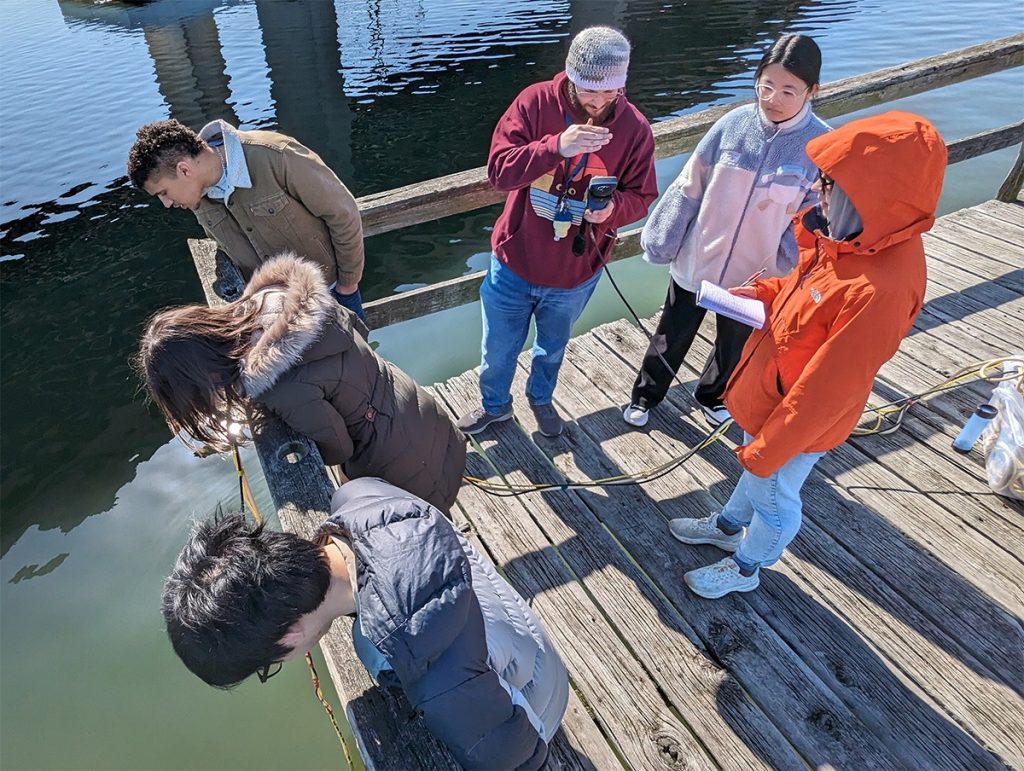By Danielle Underferth
As sea levels rise and coasts erode, low-lying communities like the Turner Station community in Dundalk are increasingly threatened by chronic flooding. One environmental health and engineering Design Day team has developed a nature-based solution: a living wetland.
Wetlands capture a lot of water, reducing flow into adjacent areas during storms. They also filter out contaminants, support natural ecosystems, and reduce erosion. Besides reducing flooding, natural solutions like wetlands have a lot of added benefits, said team member Grace Mazur.
“The alternative would literally be a seawall. The benefit of the wetland is that it adds an ecosystem for native species,” said Mazur. “Adding a wetland also is a form of habitat restoration,” because Turner Station and the surrounding area were once a salt marsh, she said.
The team researched established solutions for the two issues causing flooding in Turner Station, sea level rise and shoreline erosion.
“We decided to focus more on sea level rise. Wetlands address the problem in the most comprehensive way,” said team member Emily Sperring.
The proposed wetland extends more than 400 feet along the shore of Fleming Park, located on the southeastern shore of Dundalk. Features include:
- Chemical treatments to control phragmites, an invasive plant
- A foundation of dredged material · Native plants like seashore salt grass, smooth cordgrass, and Indiangrass
- Channels and pumps to prevent water from accumulating behind the wetland.
The pumps will help maintain specific water levels, while the channels redirect the water back into the ocean when the wetland is filled. Long-term maintenance is critical to keep the wetland working. A thin layer of sediment must be applied every 10 years to ensure the area keeps up with rising sea levels.
Developing the plan over the course of the year provided valuable experience in problem-solving and project management, said Sperring.
“It’s the most independent project that I’ve ever worked on. We definitely got a lot of experience navigating ambiguity,” she said. “It’s a really complex system, so working on a team, we could divide and conquer to get the big picture and how to solve the problem.”
While the Hopkins team’s design is theoretical, they were able to talk with the companies that are working with the community at Turner Station to solve this issue in real time.
“In a real-world situation, we’d be working closely with the community to solve this issue,” Mazur said. “Getting an inside look at how that part of the process goes was super valuable to me and was not something I had learned about in my other classes here.”
Team members are Mazur, Sperring, Ling Jin, Rafael Medrano, Osvaldo Ruiz, and Lijin Zhang.



